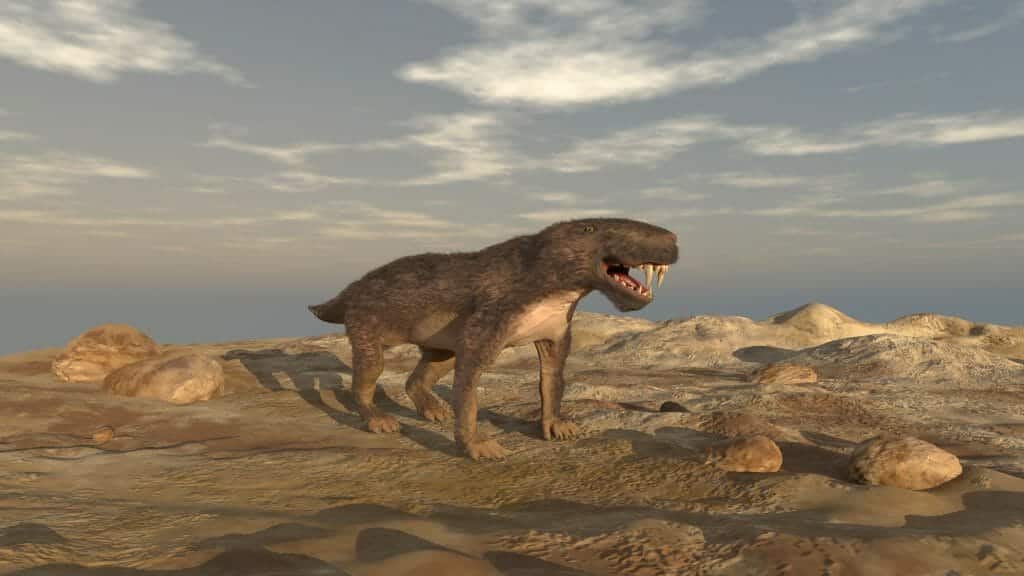The end of the Permian Period, approximately 252 million years ago, marked a devastating mass extinction event triggered by severe volcanic activity in Siberia and resulting in the loss of an estimated 90% of species on Earth. Unlike the more widely known asteroid impact that led to the extinction of dinosaurs 66 million years ago, this event occurred gradually, with species succumbing to worsening conditions over time.
Recently discovered fossils in South Africa shed light on the plight of an apex predator called Inostrancevia, a saber-toothed mammal ancestor the size of a tiger. Previously known only from fossils in Russia, these new remains reveal that Inostrancevia migrated across the ancient supercontinent Pangaea over several generations, covering approximately 7,000 miles (12,000 km). As it traveled, Inostrancevia filled the role of top predator in South Africa after the disappearance of four other species. However, its time in South Africa was short-lived, as Inostrancevia, along with its relatives, became extinct during the mass extinction event known as “the Great Dying.”
Inostrancevia belongs to a group of animals called protomammals, which exhibited features resembling both reptiles and mammals. It had a size of 10-13 feet (3-4 meters), similar to a Siberian tiger, but with a larger skull and elongated shape, along with formidable saber-like canine teeth. Kammerer, the lead author of the research, suggests that Inostrancevia likely used its canine fangs to kill prey and may have carved meat with serrated incisors or swallowed smaller prey whole. Its body posture was unique to protomammals, with sprawled forelimbs and mostly erect hind limbs, and it lacked certain mammalian features such as facial musculature and the ability to produce milk.
The Permian mass extinction event, which unfolded over approximately a million years, paved the way for the rise of dinosaurs in the subsequent Triassic Period. Widespread volcanic activity released massive amounts of lava and carbon dioxide into the atmosphere, causing a global increase in temperatures, oxygen depletion in the seas and atmosphere, ocean acidification, and desertification. Top predators like Inostrancevia were particularly vulnerable to extinction due to their high energy and space requirements. Disruptions to ecosystems and declines in prey availability or habitat significantly impacted their survival.
The researchers draw parallels between the Permian crisis and the current human-induced climate change. The species of that era faced the consequences of a global warming climate crisis, either adapting to the changing conditions or succumbing to extinction. The evidence of their persistence in the face of adversity is clear, but ultimately they disappeared one by one. The researchers emphasize that unlike the species of the Permian Period, modern humans have the ability to take action to prevent similar ecosystem crises from occurring again.














